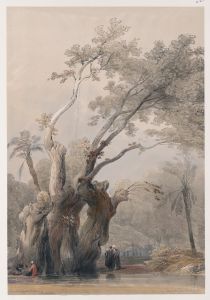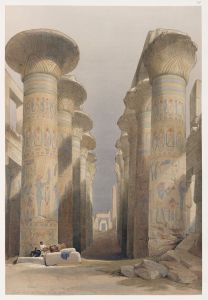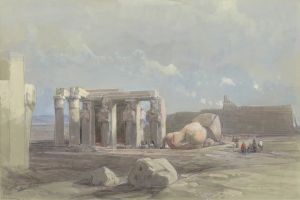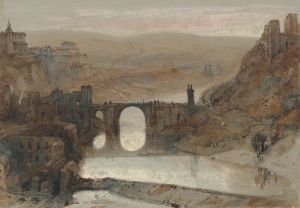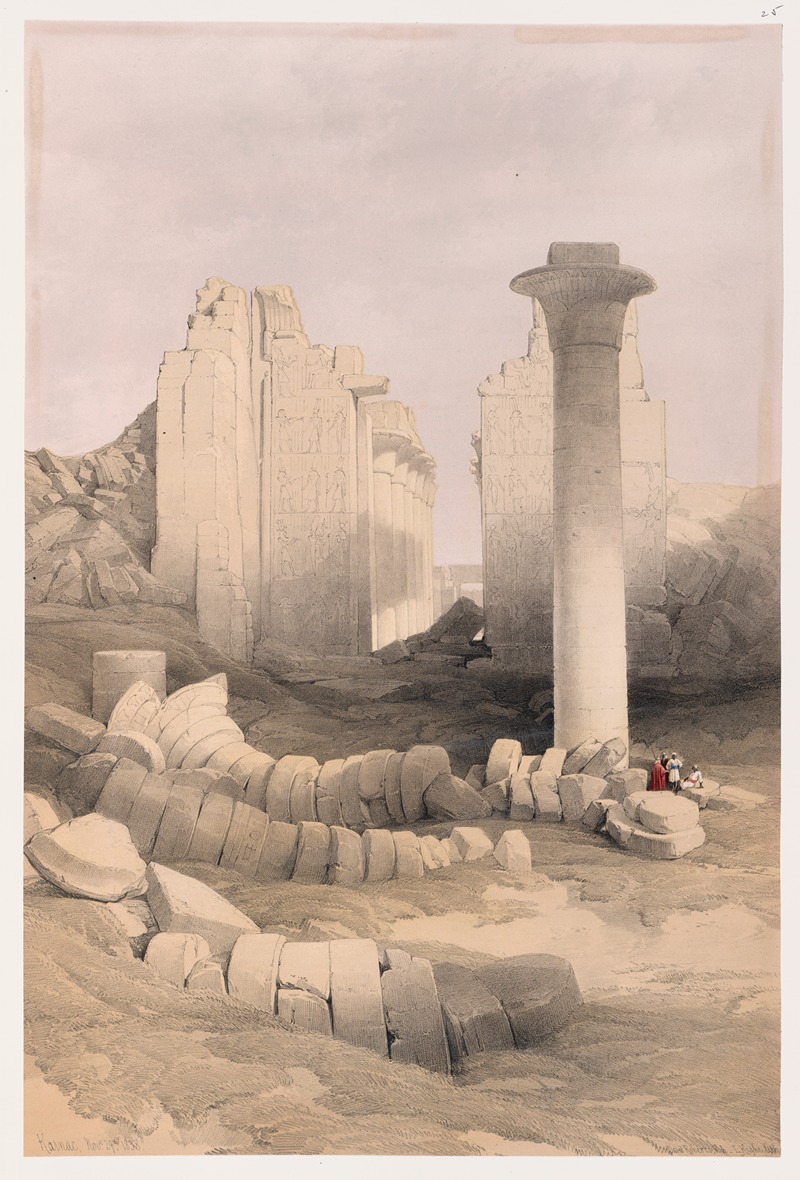
Karnac [Karnak]. Nov. 29th, 1838.
A hand-painted replica of David Roberts’s masterpiece Karnac [Karnak]. Nov. 29th, 1838., meticulously crafted by professional artists to capture the true essence of the original. Each piece is created with museum-quality canvas and rare mineral pigments, carefully painted by experienced artists with delicate brushstrokes and rich, layered colors to perfectly recreate the texture of the original artwork. Unlike machine-printed reproductions, this hand-painted version brings the painting to life, infused with the artist’s emotions and skill in every stroke. Whether for personal collection or home decoration, it instantly elevates the artistic atmosphere of any space.
David Roberts' artwork titled Karnac [Karnak]. Nov. 29th, 1838. is a lithograph based on a sketch he created during his travels in Egypt. David Roberts (1796–1864) was a Scottish painter renowned for his detailed and accurate depictions of architectural and historical sites, particularly in the Middle East and North Africa. His works are considered significant contributions to the Orientalist art movement of the 19th century.
The lithograph depicts the Karnak Temple Complex, one of the most important and expansive religious sites of ancient Egypt, located near Luxor (ancient Thebes). The temple complex is dedicated primarily to the god Amun-Ra and features a series of monumental structures, including pylons, obelisks, and hypostyle halls. Roberts' depiction captures the grandeur and scale of the ruins, emphasizing the intricate carvings and the imposing columns that characterize the site.
Roberts visited Egypt as part of a larger journey through the Middle East between 1838 and 1839. During this expedition, he created numerous sketches and studies of ancient monuments, landscapes, and daily life. These sketches were later transformed into lithographs by Louis Haghe, a prominent Belgian lithographer, and published in a series titled The Holy Land, Syria, Idumea, Arabia, Egypt, and Nubia between 1842 and 1849. This series brought widespread attention to the historical and cultural significance of the regions Roberts visited.
The specific date, November 29, 1838, indicates when Roberts made the original sketch on-site at Karnak. His works are notable for their accuracy and attention to detail, as he often worked directly from observation. This approach was particularly valued in the 19th century, as it provided European audiences with a visual record of distant and often inaccessible locations.
Roberts' lithographs, including Karnac [Karnak]. Nov. 29th, 1838., played a significant role in shaping Western perceptions of the Middle East and North Africa during the Victorian era. They remain important historical documents, offering insights into the condition of these ancient sites during the early 19th century. Today, his works are held in high regard for their artistic merit and historical value, and they are frequently studied by art historians and scholars of Orientalism.





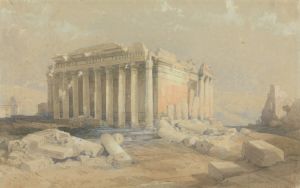
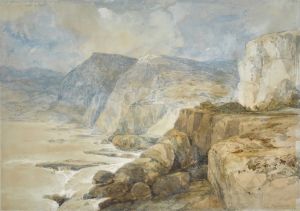

![Karnac [Karnak]. Nov. 29th, 1838](/imgs/217503/s/david-roberts-karnac-karnak-nov-29th-1838-5a10b435.jpg)
![Portico of the Temple of Edfou [Idfû], Upper Egypt. Nov. 23rd, 1838.](/imgs/217527/s/david-roberts-portico-of-the-temple-of-edfou-idfu-upper-egypt-nov-23rd-1838-79b6cf5b.jpg)
![Pyramids of Gezeeh [Giza], from the Nile.](/imgs/217530/s/david-roberts-pyramids-of-gezeeh-giza-from-the-nile-56ef7f56.jpg)
![Temple of Edfou [Idfû], ancient Appolinopolis, Upper Egypt.](/imgs/217546/s/david-roberts-temple-of-edfou-idfu-ancient-appolinopolis-upper-egypt-2a77d2d6.jpg)
![Temple of Isis on the roof of the great temple of Dendera [Dandara].](/imgs/217547/s/david-roberts-temple-of-isis-on-the-roof-of-the-great-temple-of-dendera-dandara-fd95528e.jpg)
![Temple of Wady Kardassy [Qirtâsî] in Nubia.](/imgs/217550/s/david-roberts-temple-of-wady-kardassy-qirtasi-in-nubia-d2cce283.jpg)
